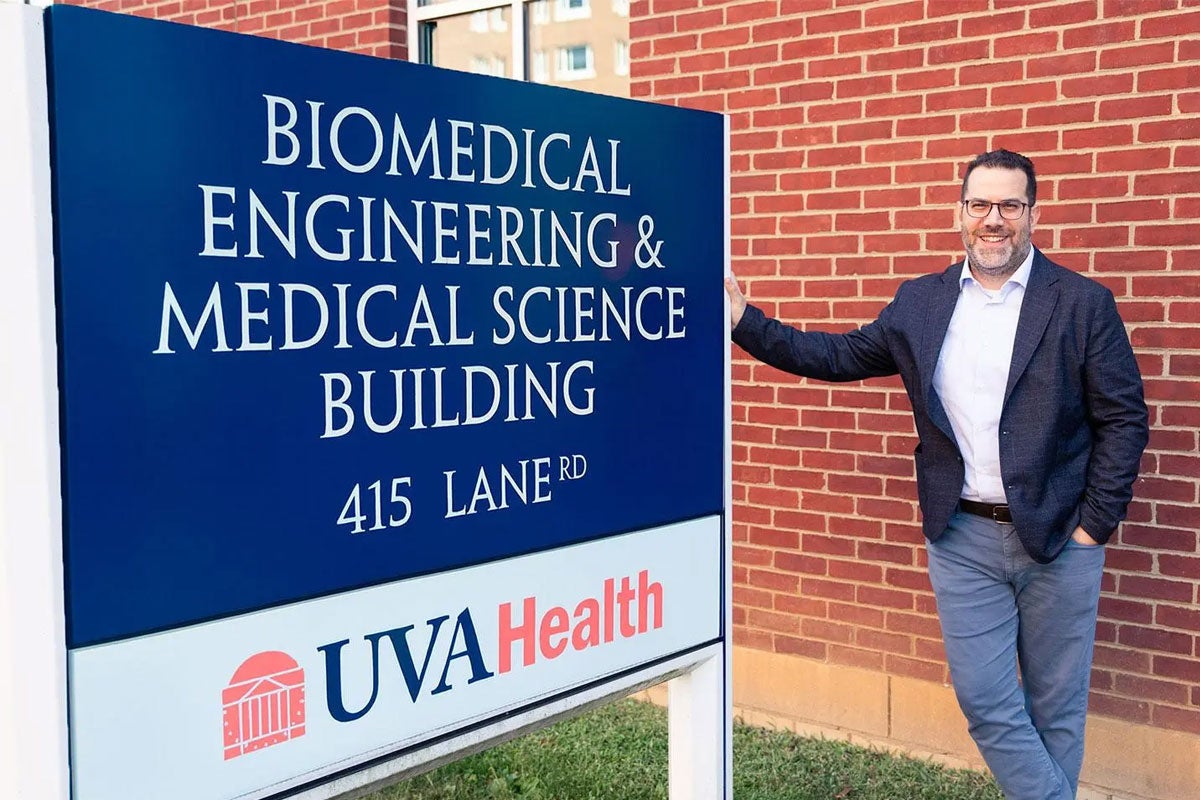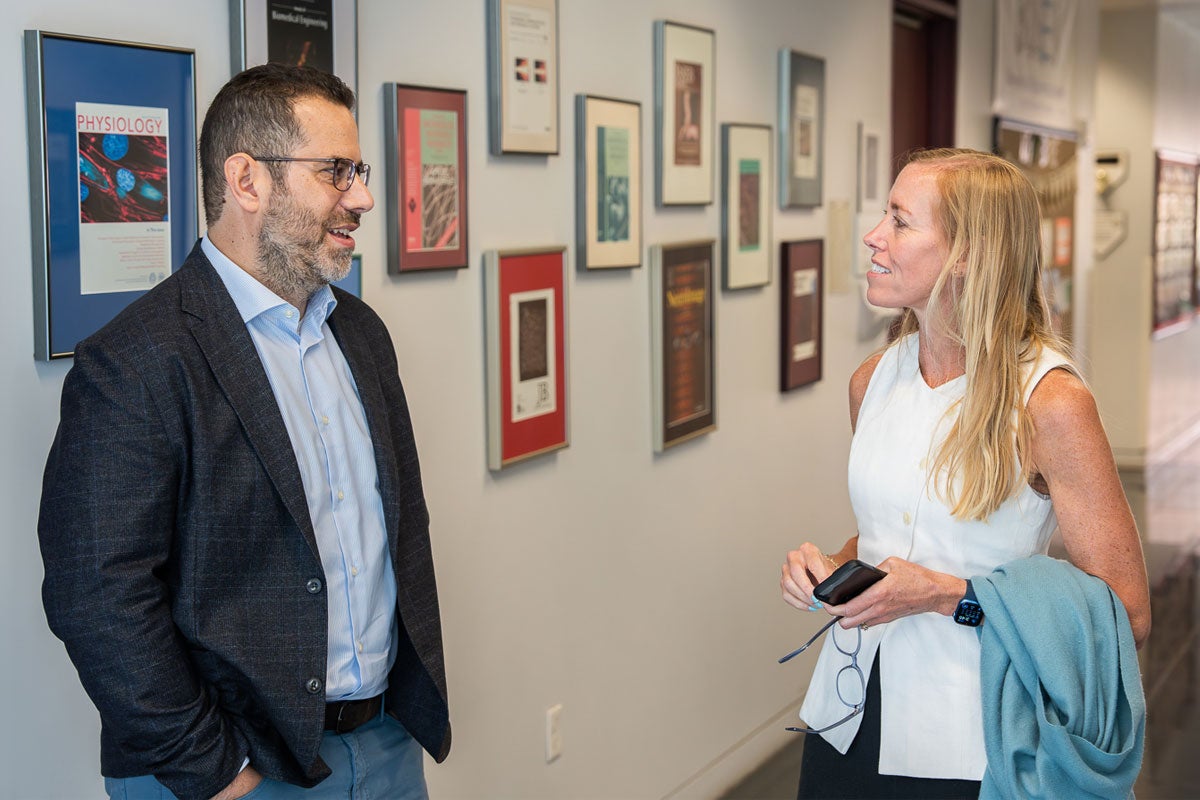
HemoSonics co-founder Francesco Viola visited the University of Virginia — and the building where his entrepreneurial journey began — in September 2025. (Photo by Matt Cosner, UVA Engineering)
HemoSonics’ Quantra Hemostasis System Makes Trauma and Surgical Treatments Safer, Leads to Better Outcomes
It’s easy to understand Shayn Peirce-Cottler’s sense of pride at the success of HemoSonics, a company transforming how doctors manage bleeding and clotting during organ transplants, heart or trauma surgery and other critical procedures. Its technology helps avoid risky transfusions, leading to fewer complications while saving scarce blood resources for patients who most need them.
“In terms of taking research at the bench — being done in a lab led by a PhD student and their advisors — to a multinational company, HemoSonics is arguably the biggest commercialization success our department has had since our founding in 1963,” said Peirce-Cottler, professor and chair of the University of Virginia Department of Biomedical Engineering.
That growth and impact hasn’t gone unnoticed. The company earned excellence awards in 2023, 2024 and 2025 from the Medical Device Network, made Fast Company’s “Most Innovative Companies” and Time’s “Best Inventions” lists in 2024, and was a finalist for a 2024 Edison Award. Forbes also featured the company last year.
Peirce-Cottler vividly recalls co-founder and chief scientific officer Francesco Viola’s lab bench when HemoSonics was just an idea. They were both Ph.D. students at UVA then, working in neighboring BME labs. Recently, she visited HemoSonics’ 45,000-square-foot facility in Durham, North Carolina.
“What started out as barely more than a pile of circuit boards, wires and some blood collection tubing on a bench in the MR5 building back in 2002 has become a beautiful manufacturing facility with gorgeous research and development labs,” Peirce-Cottler said.

Francesco Viola, PhD, and Shayn Peirce-Cottler, PhD, friends since their days as PhD students in the Department of Biomedical Engineering, catch up in the hallway at BME building MR5. Viola is the chief technology officer at HemoSonics, the company he co-founded at UVA, while Peirce-Cottler is a professor and chair of the department. (Photo by Matt Cosner, UVA Engineering)
“It literally brought tears to my eyes to see that, and the gigantic warehouse filled with boxes with the company label on the outside, knowing they would be shipped to hospitals all over the world to diagnose and help treat patients with life-threatening blood clotting disorders.”
It all started when Viola and his Ph.D. advisor, former UVA biomedical engineering professor William F. Walker, tested the ultrasonic technology he was developing on a sample of blood clotting in a test tube.
“We were impressed by our ability to measure in real time as the blood sample transforms from liquid to solid,” Viola said. “From that moment on, it took us a long time — and many discussions with physicians at the UVA School of Medicine — to link that lab observation to a tool that could help minimize and optimize blood transfusions.”
Minimizing transfusion is critical, both to manage chronic worldwide blood shortages and because blood products — whether whole or constituent parts like platelets or plasma — carry risks, including disease transmission and allergic reactions.
Read full article on UVA Engineering site.
Reprinted with permission from UVA Engineering.
Filed Under: Research
